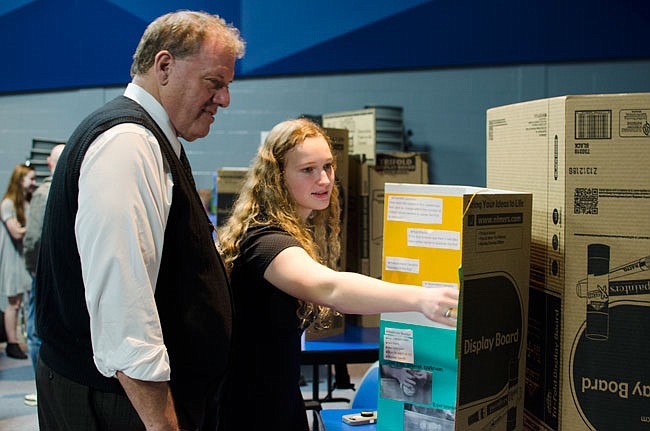Armed with display boards and data, students presented their projects to the community Wednesday during the South Callaway High School Science Fair.
Around 50 students, freshmen through seniors, filled the South Callaway auditorium after spending weeks polishing their experiments. Jars of liquid, a maze for rabbits, and photos of rubber-banded fruit were there for parents and school staff to observe.
"Overall, we're really impressed with how they've turned out," science teacher Kim Morrison said. "We can tell the students have worked hard on it because they've known about it since the beginning of the school year, so they've had enough time to plan and get it all done."
Freshmen in physical science classes and sophomores in biology classes had the option to enter the science fair, with those who do receiving a weighted credit if they maintain their grades. Juniors and seniors in the school's chemistry class had to take part in the science fair, as the class is already weighted.
"It says a lot about these students that they want that weighted credit," science teacher Ashley Wallace said. "They want to be above and beyond and (are) doing more than just what is normally expected of them."
Harlee Sneller won the best project award with an experiment studying the freezing point of water with different added chemicals.
"Most things didn't really affect it very much, but we found that adding salt to beet juice really affected it a lot, and it made the freezing point way lower and it took a long time to freeze," Sneller said.
To conduct the experiment, she mixed different combinations of chemicals into a test tube and stuck them in an ice bag, checking their status every minute. Once frozen, the temperature of a mixture and the time it took to freeze were recorded.
Sneller, a freshman, said she doesn't know what she wants to follow as a career, but the project did help her develop an interest in science.
The fair included five categories: physical science, biology, psychology, miscellaneous sciences, and chemistry and computer sciences. The miscellaneous sciences included earth, plant and animal sciences.
"Watching them interact with all these parents is really cool," Wallace said. "They're so proud and ready to present everything they did, like, 'yeah, this is mine and I did this and this.' It's really cool. I'm really proud of them."
Layla Husson, a sophomore, conducted an experiment using her pet rabbits, creating a maze and changing its walls to see if they could learn. Despite some hiccups, like a rabbit reaching the end of the maze just to turn around or deciding to settle down for a nap, her project concluded rabbits are able to learn, just "in different ways."
"You don't always get the answer you expected," Husson said.

